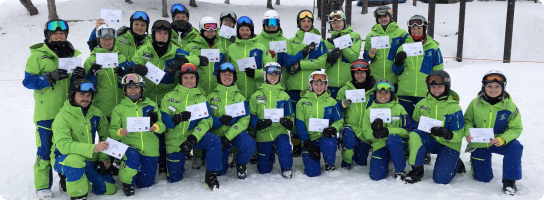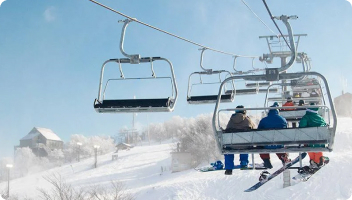Contribution by freelance writer Jennifer Dawson
America is home to over four hundred and fifty ski resorts, from one-chair hills to large destination resorts. If you’re interested in getting hired at one of these resorts, learning about the types of jobs available, figuring out where the jobs are and deciding whether you’ll need to rely on tips to make ends meet will be important.
Plenty of jobs are out there. The key to grabbing a plum job at a great ski resort is knowledge and preparation. Read on to get the hard facts about snow season jobs in the USA.
Skiing expertise is appreciated, but not mandatory
If you think that you need serious skiing skills to get hired at a ski resort during the winter, you should think again. While skiing prowess will give you an edge, it isn’t mandatory. If you don’t have the skiing chops to work out on the slopes, as an instructor, you may apply for other jobs.
Most American ski resorts hire seasonally for a host of different jobs, including, but not limited to, customer service, food and beverage and hospitality. Entry-level jobs which don’t require any experience are out there, in addition to advanced jobs that may require college degrees or other credentials.
No matter which job you take, you’ll be able to enjoy the slopes in your free time, even if your ski outings are limited to the resort’s bunny hill.
You should research ski resort locations
While you are job hunting, you should consider which areas you want to work in and then research those areas. Climate and terrain will vary widely from place to place. Learning about the features of preferred locations may help you to narrow down your short list.
If you’re planning on doing a lot of skiing and/or winter camping during your downtime from work, knowing the area will help you to bring the right outdoor equipment along and stay safe.
Harsh winter terrain may require the purchase of insulated parkas, hiking boots with high-grip soles and a very warm sleeping bag. Some areas are more prone to storms during winter than others, so do your homework.
Will you be working for tips?
If you will need to earn a fair bit of your snow season income from tips, you should look at which ski resorts bring in the most customers. These are the types of winter resorts that make it onto “top ten” lists from authoritative sources. Right now, ski resorts in Colorado, Utah, Nevada and New York are highly-ranked.
If those states suit your needs, look at their most popular ski resorts, do your homework and then explore job options. Ski resorts in the best ski areas will attract plenty of clientele, including well-heeled clientele.
The odds of getting good tips will increase when you choose a highly-ranked resort. In general, service jobs are the jobs where tips are shared among staff. Resort bartenders and restaurant servers definitely rely on tips.
Start the hunt for the ideal snow season job
As you can see, preparation is all-important. Before you apply for a single snow season job in America, you should know a lot about the industry and the best ski resort regions.
Once you’ve boned up on USA ski resorts, it’ll be time to decide where you want to work. Once you’ve made that decision, you’ll be ready to put together an amazing resume and apply online.


